When emotions are high, calming down can be tough. Stress or fear can cause a fight-or-flight response in a child’s brain. The activation of the parasympathetic nervous system is automatic when kids feel overwhelmed or even with increased anxiety.
Finding calming strategies that work quickly is difficult, especially in a stressful situation.
Mindfulness is a great tool that can be used with classes that are having a tough time or kids that are having a tantrum.
But you have to set it up right to be successful.
Most kids don’t just start breathing deeply and thinking mindful thoughts in the middle of chaos.
You have to practice and prepare them ahead of time for mindfulness and calming strategies to work.
Get your free printable list of calming strategies for kids at the bottom of the post!
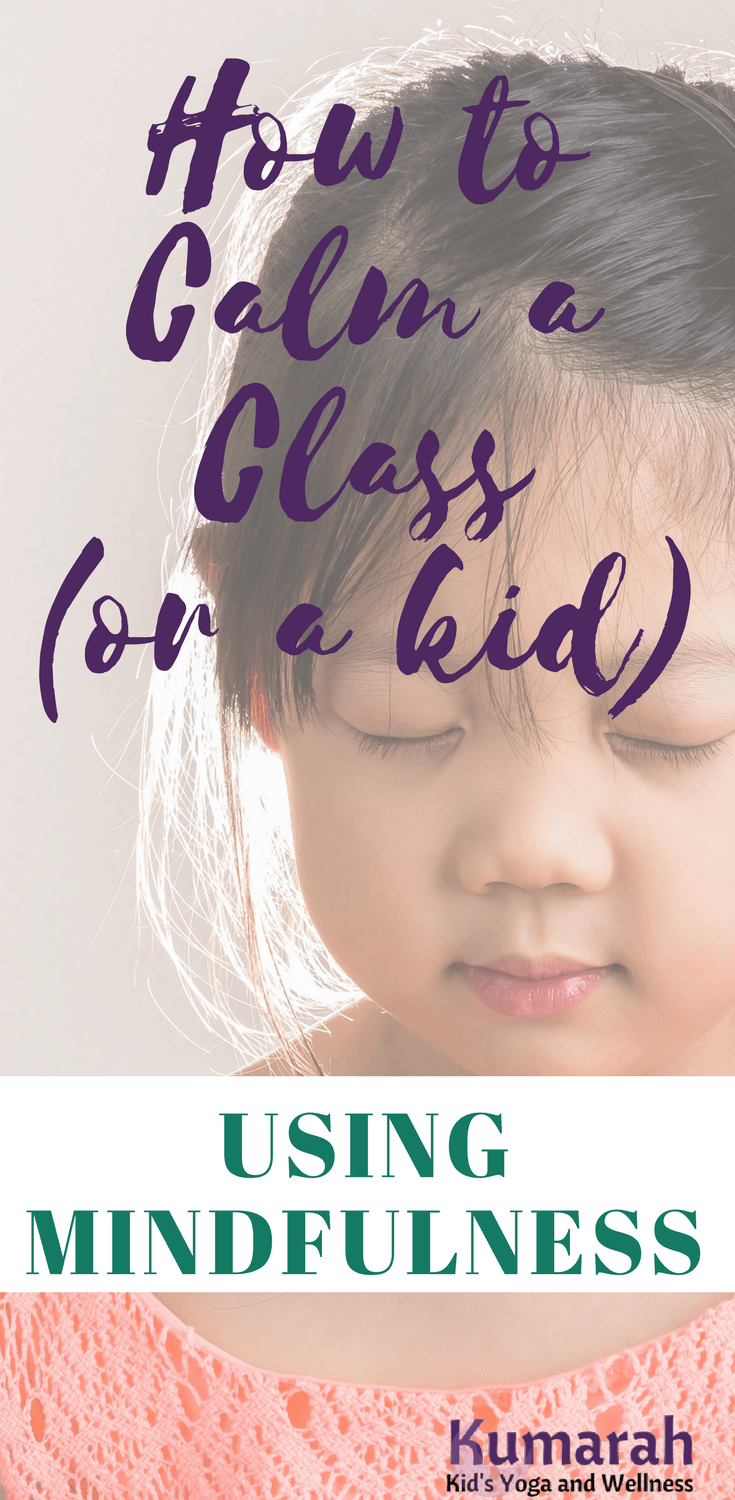
Four steps to teaching and using calm down strategies for kids
- Teach them calming techniques while they are calm- early and often
- Use positive reinforcement and praise for calm behavior and appropriate reactions to stress
- Demonstrate mindfulness practices yourself and name them out loud to your kids
- Use visuals and tools to help your child learn what calm looks and feels like
1. Start Teaching Calming Strategies to Kids Early and Often, not Just as Needed
It’s important to start teaching children about calming strategies before they are in the midst of a meltdown or tantrum. By regularly practicing these techniques when the child is calm, they will become more familiar with them and be able to use them more effectively when emotions are running high.
Regularly incorporating mindfulness activities into daily routines can also help kids develop a sense of calm and relaxation
Introduce deep breathing, or mindful noticing, when the child (or class) is in the correct brain state. If they are not feeling safe or cared for, they will have a hard time learning.
If they are extra silly or running with high emotions, it’s incredibly difficult to teach them something new and have it stick.
Learn the basics of deep breathing and practice them together in a quiet place:
- Inhale through your nose, filling your belly.
- Exhale slowly through your mouth to let it go.
Practice these fun and entertaining breathing techniques together!
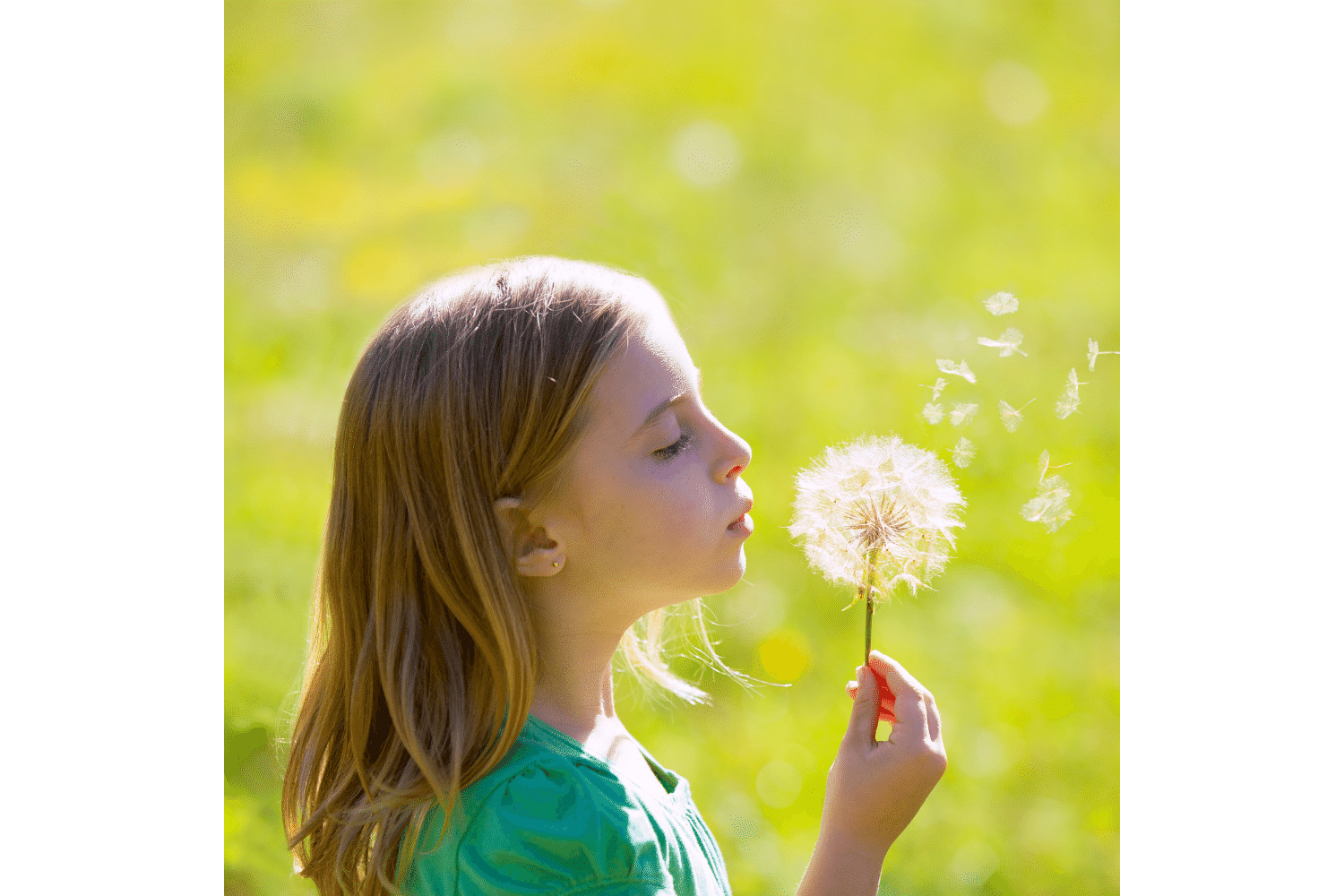
2. Praise your child when they are calm and focused
Notice when they are calm and working, or being focused, and give them praise! Let them know what it is that you like about the way they are behaving.
Use targeted language to specifically call attention to their body, their movements, their voice, etc:
- “I see that your body is sitting very still while you are reading; that is a safe way to sit.”
- “I like that you just took a deep breath to help yourself pick a new color. I bet that kept your brain calm.”
- “I can hear you very clearly while you are telling me about your problem because you are talking in a normal voice. That helps me understand you better.”
All of those examples do these three things:
- Use a sensory word to describe how and why you are noticing them
- Name the positive action that the child is displaying
- Tell them what that action is helping them achieve (why they should keep doing it)
3. Demonstrate mindful practices yourself, and name them!
When frustrated or emotional, take deep breaths visible to your kids. This helps you calm down and model appropriate reactions to stress.
Explain what you’re doing and why, saying, “I’m frustrated with the reminders today, so I’ll take deep breaths. Join me if you need to.”
For anxiety or excess energy, try a hand mantra to relieve stress. Follow with yoga or mindful movement to reduce stress and lower blood pressure. Physical activity reduces stress hormones and calms the nervous system. Invite your students or kids to join!

4. Use visuals to show your child what you are practicing and why
- Watch a mindfulness video with them to prepare them for what to do and why it is important.
- Draw a chart of their brain with colors like this to show when they should use these practices. (Primarily in the red state when they need to feel reminded that they are safe).
- Use a Hoberman sphere to show the way our lungs expand and contract with our deep breathing
These also help prepare you to stay calm and focused in the moment. When big emotions or problems DO arise you will be better prepared to help keep kids calm.
Here’s a video I created for my YouTube channel that goes through some of the basics of mindfulness breathing, listening techniques, and focusing attention.
I’m an elementary school teacher and using these techniques to help us practice mindfulness meditation in the classroom
30 Mindfulness Calm Down Strategies for Kids
Many of these simple strategies rely on mindfulness, which is a way to focus attention on just one thing. The goal is to help them focus on something close at hand in the present moment, to distract them from negative thoughts and stressful situations.
Young kids can’t work on problem-solving skills when they feel stressed or angry.
If they are feeling angry enough to yell, hit, or run, they are not in a place to immediately try some relaxation techniques. Then need a distraction, a fun activity, or some self-soothing to start to calm down.
Once they are in more of a peaceful place, then you can spend time on some more in-depth calming activities, during which you can start to have a conversation about what it is that upsets them.
Quick fixes for Calming Down
Ask for a hug
If your child or student wants a hug, even if they are mad at you, it can be a great help to their stress.
Tell your child to give themselves a hug
Downwards pressure on your shoulders is an effective way to calm the nervous system. Wrap up your arms and press your hands down like a big bear hug.

Stop and stand on one foot
This is a great way to bring focus back into your body. Have your child stand on one foot for 10 seconds and then switch to the other side.
Fingers and Toes
Give focus directions like “wiggle your toes, wiggle your fingers, scrunch your nose, shake your shoulders,” etc. These small isolated movements get children calm by bringing them back to the present moment.
Count fingers 1, 2, 3, 4 to help focus attention
Use your thumb to press each finger individually and say a calming phrase, or just count. This is a good strategy to manage anxiety as well.

Trace the lines on your hand
Ask them to trace the lines on your hand. Can they find 3 lines? 5 lines?
Count backwards
Tell them to count back from 10 or 20, holding your fingers up and lowering each one slowly. Or count up, if they are younger children.
Wash your face
Splash some water on your face, and then slurp some up from your hands at the same time. Cold water can have a calming effect on kids. Also, the silly aspect of this activity can help alleviate tension and bring a sense of lightheartedness to the situation.
Squeeze a stress ball
Find or make a stress ball to use in times when your kids are feeling overwhelmed. The act of squeezing and releasing can help release tension in the body and reduce anxiety.
Look at a mindfulness glitter jar
Create a simple mindfulness glitter jar by filling a plastic bottle with water, glitter and a few drops of dish soap. When shaken, the glitter swirls around and then eventually settles at the bottom. This can be a calming visual for children to focus on when they are feeling anxious or overwhelmed.

Rub your hands
Create some heat and energy by rubbing your hands together quickly. After about 20 seconds, place your hands gently over your eyes and take a deep breath.
Say an affirmation
If you’ve taught your kids or students affirmations, have a few on hand to look at or pull from a jar. Say the affirmation 3-5 times like a mantra, maybe touching each finger as you do, or rubbing a pretty painted affirmation stone.

Mindful Breathing to Calm Down
Belly Breathing
Teach them to breathe in and out through their nose. They can sit up straight or lie on their back to feel the breath in their tummy. If they are lying down, use a stuffed animal on their tummy to bring their attention to their belling moving up and down.
Use a breathing ball to help learn about inhales and exhales
Invest in a Hoberman sphere! It’s a fun way to demonstrate the way their lungs (or diaphragm) should expand with breath in, and contract with breath out.
Breathe like a bunny
One fun way to practice breathing is to pretend you are a bunny. Show your child how you can make an exaggerated sniffing motion with your nose, then exhale through your mouth.
Check out this post with some more fun animal-themed breathing techniques.
Five-finger relaxation technique
Teach children to use their fingers as a visual aid for deep belly breathing. Spread your fingers out wide and trace up a finger as you breathe in, then trace down as you breathe out.
Blow bubbles
Encourage them to focus on their breath as they blow the bubbles, observing how the bubble expands and then pops.

Pretend to blow out candles
Teach children to breathe in through their nose and then pretend to blow out one birthday candle at a time (use your five fingers to represent five candles and take that many deep breaths.)
Calm Down strategies with movement
Do a Yoga Pose
Have a card deck of yoga poses ready to try in case of an outburst. Draw a card and do the pose for the count of 10. Child’s pose is a great one to start with to reduce stress.
Hang upside down and make silly faces
Try Downward downward-facing dog pose, or even lay upside down on the couch or a bed. This change in perspective and integration of the vestibular system can help reset their emotions.

Play a copycat clapping game
Start with a simple rhyme and ask the child to repeat it. Then add on one more clap and continue until they can’t quite get it right.
Play catch my clap
Hold your hands out and say, “Your job is to catch my clap and clap your hands at the exact moment that I do.”
Put on a dancing song
Play music, especially an upbeat song, and encourage your child to dance freely and expressively. Ask them to focus on their body movements and the beat of the music, without any judgment or criticism.
Swing your arms up and down with breath
Stand with your feet shoulder-width apart and swing your arms from side to side as they take deep breaths in and out. This can help release tension and stress from the body, especially the shoulder blades, where we often hold tension.
Tippy toes and Heels
Practice standing on your tippy toes and then lowering down to stand on your heels. This can help focus on balance and grounding abilities, helping to calm the mind.

Do the washing machine exercise
Stand with your feet shoulder-width apart and bring your elbows in at your sides, bending your knees gently. As you breathe, twist side to side with a whooshing side like a washing machine shaking up the clothes.
Pretend to be a dryer
Stand with your feet shoulder-width apart and hold your arms up in front of you, elbows bent and fists clenched. spin your fists around your forearms like a whirling dryer, and whoosh your breath out to “dry” the clothes.
Tense and Release muscle relaxation
Guide your child through tensing different muscle groups in their body for a few seconds, then slowly releasing the tension while taking deep breaths. This could be a guided meditation of a body scan as well.
Jumping jacks
Jumping jacks are perfect for letting out some extra energy and getting their blood flowing. This can help release any built-up tension or stress in their body.
Walk outside
Go for a quick walk in the fresh air to remind kids of the big, wide world. It improves well-being and will increase feelings of connectedness.
Use Noticing Language to bring awareness to their sense
Noticing language is a great tool for practicing mindfulness around kids. In the Responsive Classroom model of teaching, it is called Reinforcing Language, because it helps to reinforce positive behaviors.
It also tells kids why what they are doing is important or helpful.
Noticing language is also great for reinforcing mindfulness when you model noticing emotions, feelings, or things about the environment.
Examples of noticing language:
- I noticed that when I took two deep breaths, I could feel my heart rate slow down. (Reinforces Mindful Breathing)
- After that activity, I feel a little silly, so I am going to squeeze my hands a few times to redirect that energy. (Reinforces Mindful Movement)
- It looks like you are feeling a little sad. Would you like a hug? (Reinforces Mindfulness of emotions)
This language is a great way to point out what is going well in moments of calm so they can remember them when they are feeling stressed.

Take these steps if things are getting out of hand and you need a class or child to calm down quickly:
- Pause your own movement, be still or find a place to stop
- Lower your voice
- Get down closer to their level
- Take a deep breath and ask them to as well
- Explain that everyone will pause for a moment to gather their calm energy back
- Choose a quick fix for calming down, or ring a bell to bring awareness to the sound
- Choose a more elaborate calming activity if you have time and need it
Once the mood is lightened, remind them that these big feelings are ok and they will pass, but it’s important to get their brain back to a more calm space.
As soon as everyone is calm again, then you can talk about what it was that caused the outbreak.
- What were you (we) feeling that caused the issue?
- How and why did things escalate?
- What can be done to repair any damage to feelings or items?
- What can be done ahead of time to prevent that outburst from happening again?
Hopefully, with these mindfulness practices and skills, you can start to prevent tantrums, outbursts, and loud classes with emotionally draining distractions.
The most important part is to start practicing calm down strategies for kids daily and talk about the benefits for yourself and your kids or students.
You’ll be on your way to calm days and nights in no time. (Don’t forget to use guided meditations at bedtime for a calm transition to bed!)
Having mindfulness calm-down strategies is a great alternative to giving up or hiding from big emotions. Instead, use these tools to create happy memories and emotionally resilient kiddos.
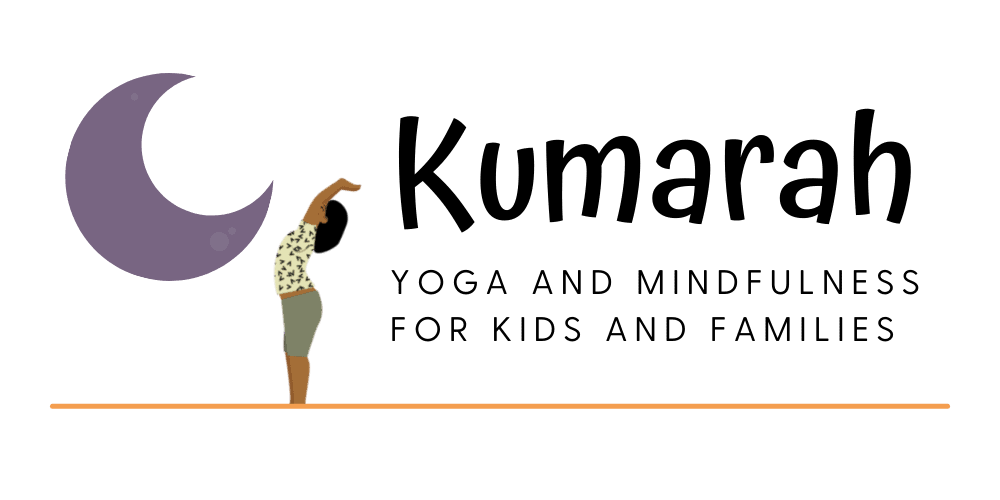

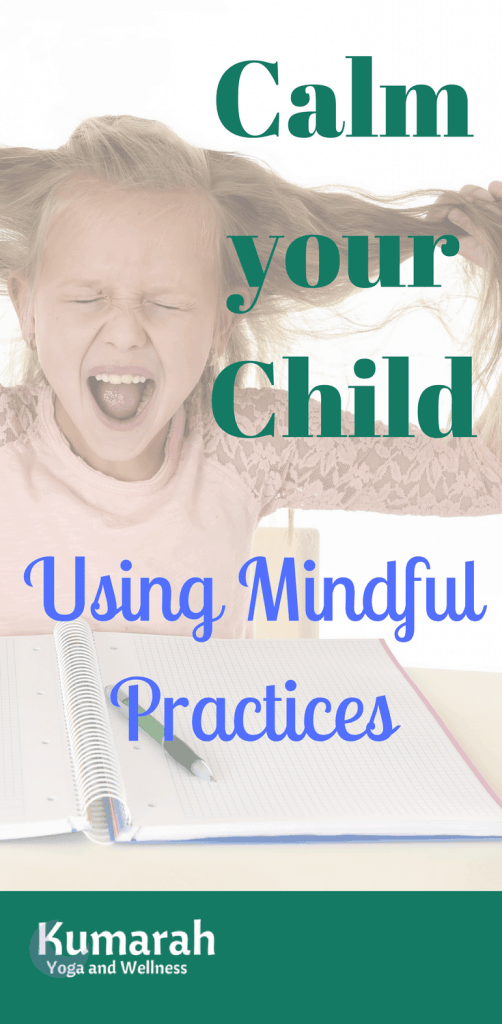
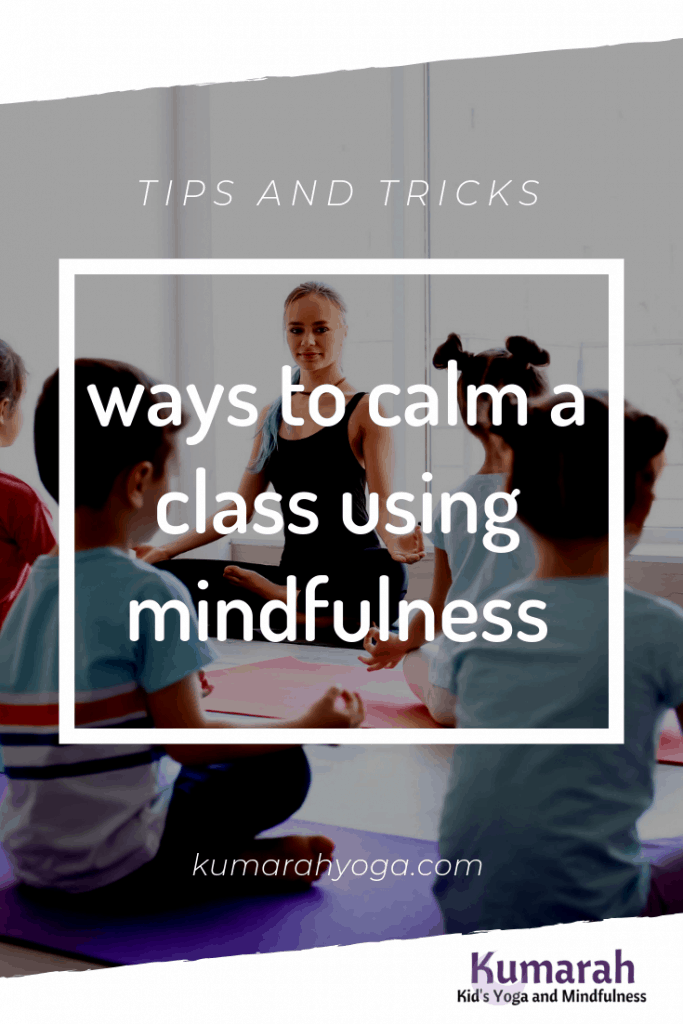


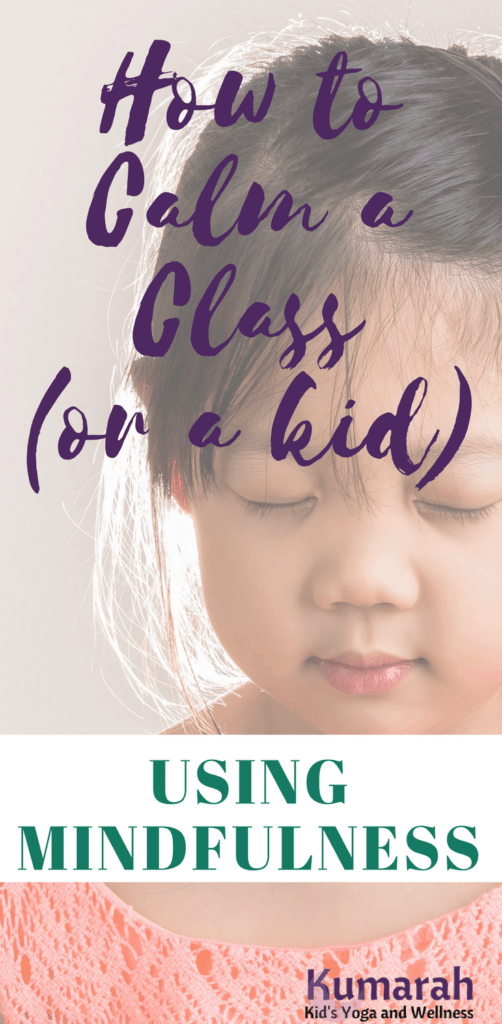
Love this article. I can’t wait to try these with my girl!
Thank you, Camryn! I’m glad you enjoyed it. Starting mindfulness young is so good for kids (and their parents!).
I forgot my password but l am registering again over and over not recieveind a email
Hi Mallie!
Sorry to hear you are having trouble. There is no need to register for the Free Resources Library, the link and the password are both in the emails you get from me. You should be able to click on the link within the email and the password is the same for everyone (it’s in the email). I’ll send you another email right now with the information again. Thanks for reaching out 🙂
Maia
Wow, I am so glad I opened my email! Tons of useful ideas I can practice with my four and five year old at home. We stay home for school and plan to incorporate mindfulness into an afterschool program I am starting.
Hi Donna! I’m so glad to hear these ideas have helped you. Good luck with the mindfulness program, that will be so good for them.
-Maia